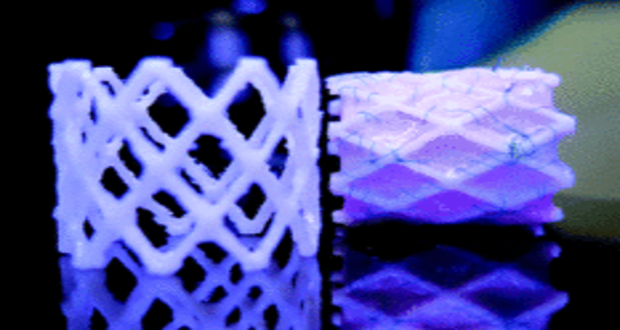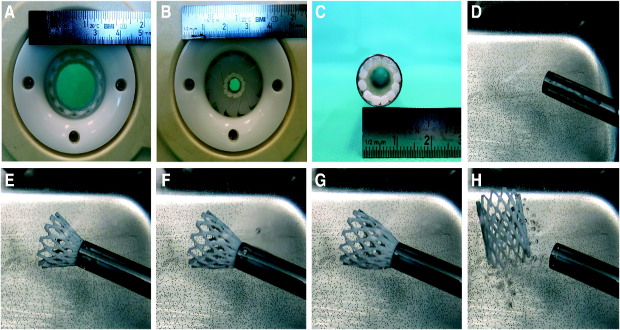Researchers in the Netherlands 3D print stents for pediatric patients

Researchers at Eindhoven University of Technology (Tu/e) in the Netherlands have used 3D printing technology to create a new innovation for the future of pediatric medicine. Their creation: a 3D printed biodegradable stent that grows within the pediatric patient.
For those who may not know, a stent is a mesh tube that is used to help treat narrow or weak arteries that is caused by a build up of plaque from heart disease. Today, stents are currently made of either metal or plastic, and are known to cause complications such as hyperplasia. In addition, stents will also remain in the body forever, regardless of if they are needed or not.

A: Stress–strain curves of polymer wire and dog bone samples; B: 3D printed prototype; and C: computational geometry adjusted considering the prototype dimensions. // Eindhoven University of Technology
Using a MakerBot Replicator 2x to print their stent, the researchers created a model of their stent using nitinol. This was then used to create the prototype stents, integrating a flexible copolyester elastomer. The incorporation of this material was used to help promote the acceptance of the medical device inside the body over time.
In order to test their stents stability, the researchers conducted a number of tests, which included computational crush and crimping tests, as well as degradation tests in order to see its level of biodegradability using accelerated hydrolysis.

Crimping and delivery of the 3D printed prototype. A: 3D printed stent placed inside crimping device. B: Stent crimping to an approximate diameter of 10 mm. C: Stent transferred to the transapical delivery device with an internal diameter of 12 mm. (D–H) Self-expansion as the stent is pushed out of the delivery system. // Eindhoven University of Technology
Although the stents are still at the concept stage, this new innovation offers a potential alternative to the current medical devices used. With the tests and demonstrations done on the prototypes, researchers are now tasked with finding better materials to use in addition to reducing imperfections to the struts’ profile.
You can read the full report here.
What do you think of these 3D printed stents? Do you think that there will be further developments for this medical device? Let us know in a comment below or on our Facebook and Twitter page!







